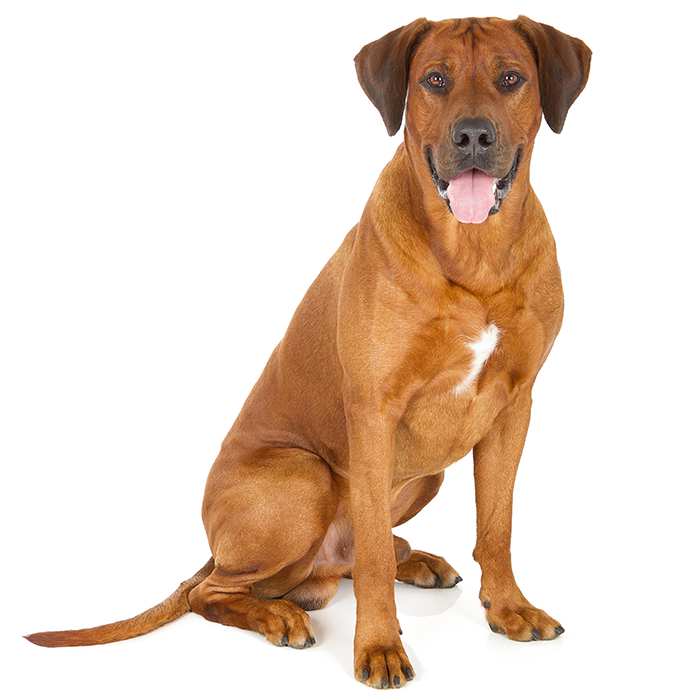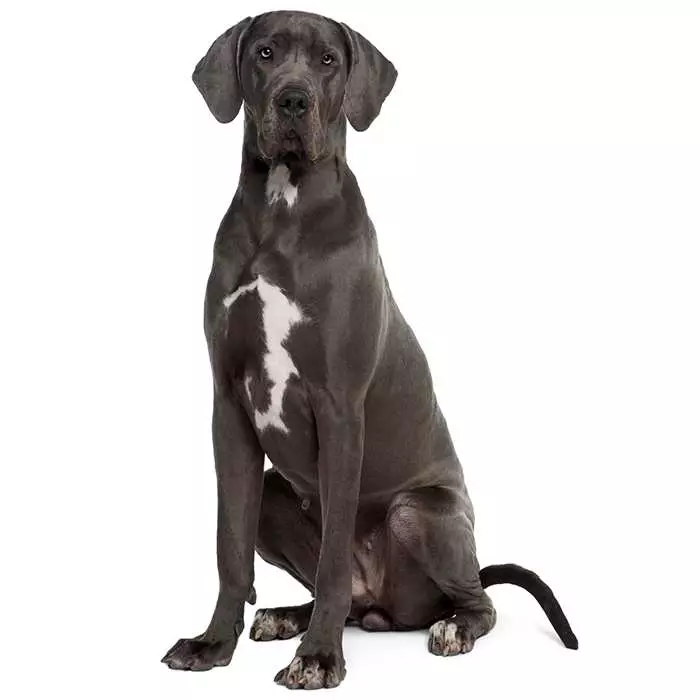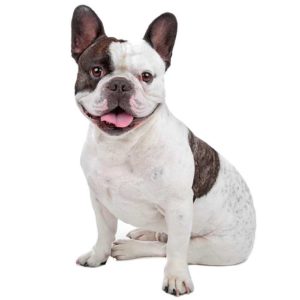Afghan Hound
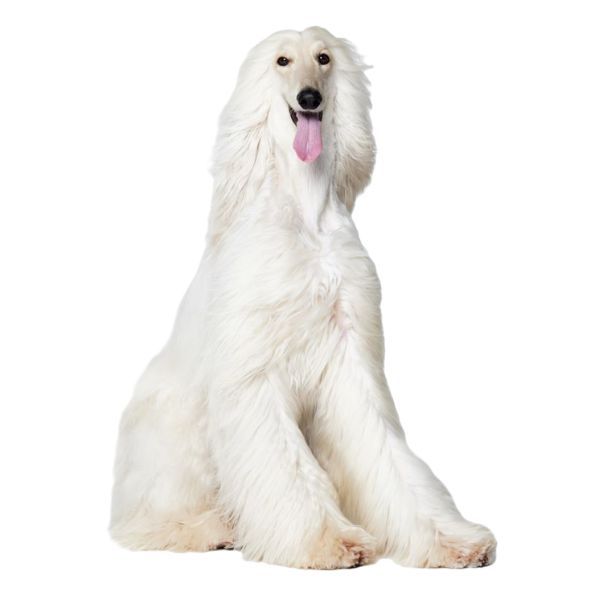

| Recommended for | Families wanting an independent dog |
| Breed Classification | Hound group |
| Other names | Afghan, Affie |
| Lifespan | 12 -18 years |
| Size | Large |
| Temperament | Loyal, affectionate, aloof |
| Intelligence | Average |
| Tendency to bark | Low |
| Maintenance Level | Medium |
| Health Risk | This breed has an around average probability of having health issues in its lifetime, hence it is one of the more affordable breeds to insure. |
Insuring an Afghan Hound?
Get our award-winning Nose-to-Tail Cover with up to $30k annual benefit limit, up to 90% of eligible vet bills back, and no sub-limits.
Get a quick quote
Is this breed right for you?
Try our breed selector quiz to find out your best matching breed!
Insuring an Afghan Hound?
Get our award-winning Nose-to-Tail Cover with up to $30k annual benefit limit, up to 90% of eligible vet bills back, and no sub-limits.
Get a quick quote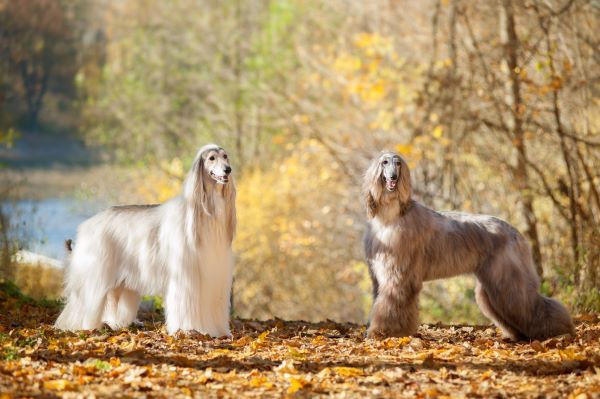
Breed history of Afghan Hounds
Some authorities maintain that the Afghan Hound is the oldest breed of purebred dogs. Pre-dating written history by a few thousand years, and developed in some of the world’s most remote locations, its time and place of origin within the vast area that is now Afghanistan, India and Pakistan remains a mystery.
For centuries Afghan Hounds were rugged, fleet-footed hunting companions and status symbols of royals, tribal chieftains, and aristocrats in Asia’s mountain kingdoms. However, because Afghanistan’s Islamic culture forbids the depiction of animals in art, there is no pictorial record of the breed. The only known early drawing is an etching from around 1813 that depicts a native soldier with a dog which remarkably resembles young Afghans of today.
The Afghan didn’t make its entrance on the stage of Western history until the late 1800’s when British military officers returning from the Empire’s far-flung corners introduced the breed to Europe. By the early 1900’s, the Afghan was a preferred breed of the British gentry. The forebears of today’s Afghan Hounds were imported directly from Afghanistan. The breed still exists in Afghanistan, although only in very small numbers.
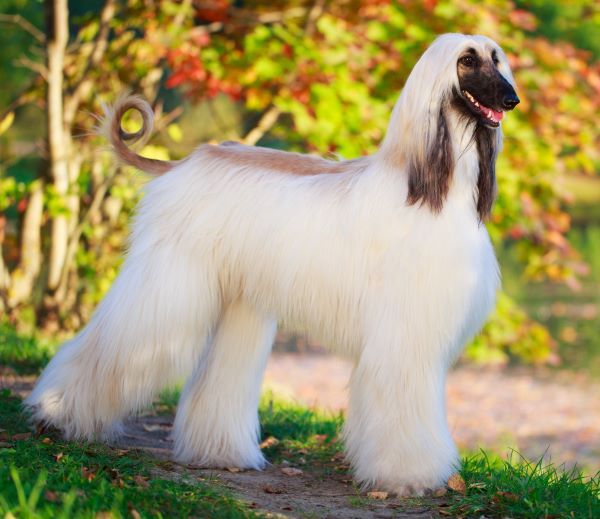
Physical description of Afghan Hounds
Afghan Hounds belong to the subcategory of hound breeds known as sighthounds, dogs who rely on their panoramic vision and explosive speed to spot and pursue their prey.
Among the most eye-catching of all dog breeds, the Afghan Hound is famous for its elegant, regal beauty. Large, long-legged and powerfully built to endure a long day’s hunt, they are also very fast and agile runners who can reach speeds of 45km per hour. Their huge paw-pads acted as shock absorbers on their homeland’s punishing terrain.
The thick, silky, flowing coat that the breed is famous for isn’t ‘just for show’; it served as protection from the harsh climate in mountainous regions where Afghans originated. Long and very fine on the legs, ribs, flanks and back from the forehead, it can be short and much coarser along the dog’s back. A long silky topknot is also a breed characteristic, and a hood of long hair may form from the top of the neck and flow into the shoulders and withers.
| Weight range | 26 to 34 kg |
| Height range | Males 68 to 74 cm; females 60 to 69 cm |
| Colours | Gold, silver, black, white, cream, blue, all shades of brindle, black & tan, black & gold, black & silver, black & brindle, and domino |
| Coat length | Long on ribs, fore- and hindquarters & flanks and flowing back from the forehead |
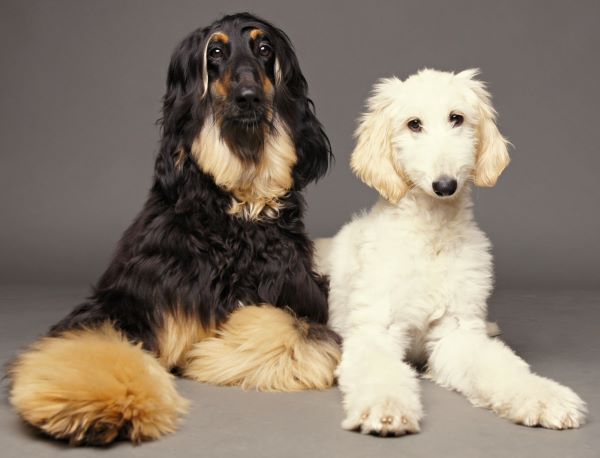
Afghan Hound personality and temperament
Afghans bear themselves with confidence, dignity and pride, but are friendly, good natured and laid back at home. Although not a merry, tail-wagging type of hound, sometimes they will exhibit an endearing streak of silliness. They are happy to relax elegantly on the couch like a sphinx, and can watch TV for hours on end without appearing to move or blink an eye.
Independent and aloof in general, Afghans are affectionate and extremely loyal to humans they have bonded with, but not friendly towards strangers. Their loyalty can make it difficult for an adult Afghan to adjust to new owners.
Because of their aloof and dignified character, the Afghan Hound will not want to look at you, but rather looks through you or stares into the distance as if you were not there. It’s definitely not a breed that’s suited to all would-be dog owners, and those looking at acquiring one need to be well prepared for its independent nature.
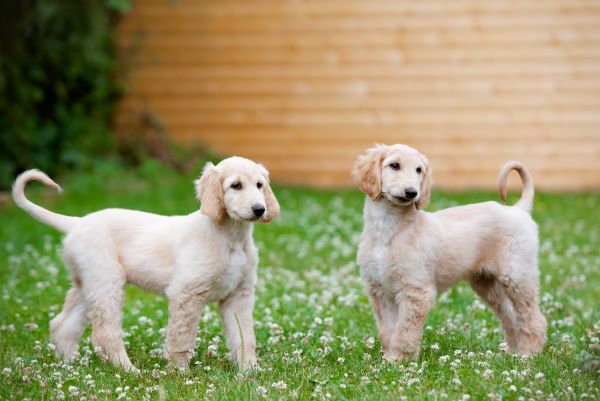
Afghan Hounds with kids and other pets
They are also known to be good with children, always up for a game and some playtime. They will get along with and will form a close bond with those that play or lavish attention on them. Their long mane is very tempting for toddlers who are looking to get hold of something to pull themselves up, so supervision is required and children must be taught from a young age to be respectful.
The Afghan Hound tends to get along with other animals in the family, especially other dogs. Bred as a hunting dog, the Afghan does retain a prey drive, which means that they can chase cats and smaller animals, so you should avoid leaving them unattended with small animals.
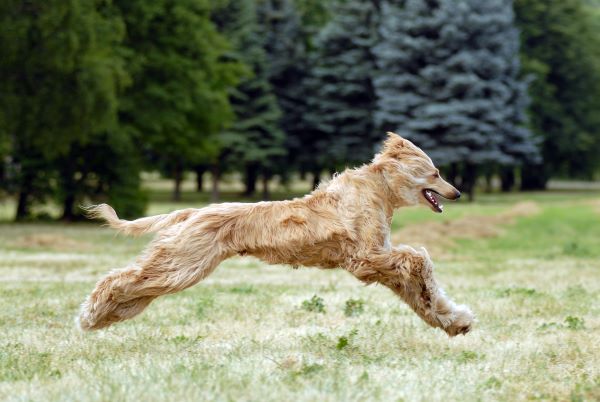
Afghan Hound training and exercise
The Afghan Hound has plenty of energy and a lot of stamina, which means it requires a lot of exercise. They are fast and need to run, so we recommend taking them for long runs or teaching them to run alongside a bicycle. While daily walks are important, they are not enough to meet this breed’s needs.
Afghan hounds excel in dog sports such as lure coursing, which appeal to their hunting instincts. Because they are sighthounds, bred to hunt and chase prey by sight, they have a strong instinct to run off in pursuit of perceived prey, and walking off leash is not advisable. Ideally, they should have the opportunity to run at full tilt several times a week in a large, enclosed area. They are tall, lean, and strong, which makes them excellent jumpers, so their exercise area must have a high, secure fence.
Because this breed can be independent, owners need to start training their puppies as soon as possible. This will help teach the basic commands, but be aware, Afghan owners are often quick to point out that no amount of training will overcome the breed’s hunting instinct to break off on a high-speed chase.
The breed can also be quite aloof with strangers, so early socialisation is especially important for the Afghan. Their free spirit and independence can make them hard to train, so they are not recommended for novice dog owners.
| Energy level | High |
| Exercise requirements | Very high |
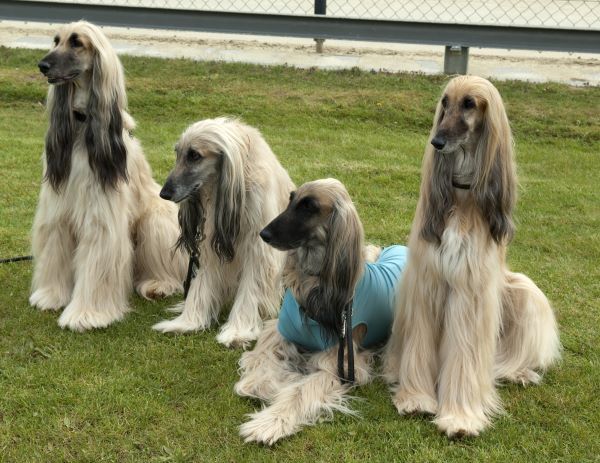
Afghan Hound feeding and nutrition
The Afghan Hound should be fed a premium, high-quality dog food appropriate to the dog’s age (puppy, adult, or senior), size and activity level.
As sight hounds, Afghan Hounds have naturally svelte physiques, and their protruding hipbones are a unique breed characteristic, not a sign of being underweight. That said, Afghan Hounds are athletic, active dogs with a hearty appetite to match, so be mindful that your dog is getting enough good nutrition to meet its needs.
Because bloat and/or torsion is a concern with this breed, avoid free feeding or feeding just one large meal, and instead split meals, feeding 2 to 3 times a day for an adult dog. Strenuous exercise is not recommended before or after feeding time.
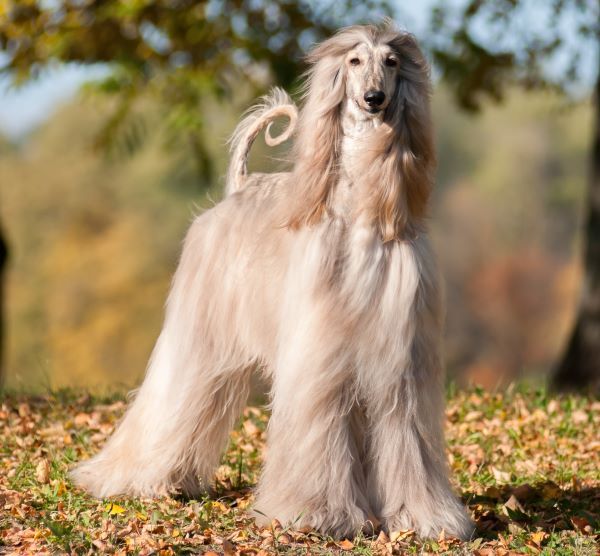
Afghan Hound care and grooming
Afghan puppies have short, fuzzy coats that require little maintenance. They don’t stay that way for long, however.The adolescent and adult Afghan’s fine long hair requires lots of grooming, and brushing after each outing is recommended to ensure a silky smooth look.
Several hours per week of brushing are needed to keep the hair free of tangles and mats, as well as to remove any debris. Keeping the hair clean and mat-free is the key to keeping the Afghan’s glorious coat looking its best. Regular bathing, with shampoo and conditioner is also required – ideally on a weekly basis, but at least fortnightly.
The hair will need trimming, and while you may be able to do this yourself, it can be beneficial to have your Afghan visit a professional groomer every couple of months.
Health issues for Afghan Hounds
- Cataracts are an opacity or cloudiness in the lenses of the eye, which can be complete or partial. Dogs with more than 60 percent opacity in their lens can have partial blindness or complete loss of vision. Cataracts usually occur in both eyes, with the condition being more common in dogs than in any other species. Cataracts are progressive and if not treated, can result in blindness. The most suitable mode of treatment is early surgery.
- Hip dysplasia and Elbow dysplasia are inherited conditions which occur when the ball and socket of the affected joint do not fit together properly. As these conditions can cause painful arthritis in the joint later in the dog’s life, it is essential to begin management and/or treatment of the condition as soon as possible. For elbow dysplasia, surgery may be recommended.
 Dilated cardiomyopathy is commonly referred to as an enlarged heart in dogs. In this condition, the cardiac muscle walls progressively weaken and lose their ability to contract properly and pump blood efficiently. This leads to poor circulation and increased pressure in the heart and blood vessels, which causes the heart to stretch even more.
Dilated cardiomyopathy is commonly referred to as an enlarged heart in dogs. In this condition, the cardiac muscle walls progressively weaken and lose their ability to contract properly and pump blood efficiently. This leads to poor circulation and increased pressure in the heart and blood vessels, which causes the heart to stretch even more.- Gastric torsion, also know as bloat, is a condition that affects large, deep-chested breeds like the Afghan Hound. A life-threatening stomach condition, it occurs when a gas-filled stomach flips over on itself, twisting the opening to the oesophaegus and intestines.
- Hypothyroidism, in which the thyroid gland does not produce enough thyroid hormone, is a growing issue among Akitas. Symptoms include weight gain and hair loss. Epilepsy can also be caused by hypothyroidism. Affected dogs can take daily oral medication to combat the condition.
- Progressive Retinal Atrophy (PRA) describes a group of conditions in which an atrophy or degeneration of retinal tissue occurs. The first sign of progressive retinal atrophy is usually night blindness; this progresses to total blindness over a period ranging from months to years.
- Sighthounds, including Afghans, are more sensitive to anesthesia than other breeds.
Not all conditions are covered by Pet Insurance. For details of Bow Wow Meow Pet Insurance cover, refer to the Product Disclosure Statement.
Free engraved pet ID tag on sign up3
Customer Satisfaction
21 day cooling off
Easy to use Pet Portal


